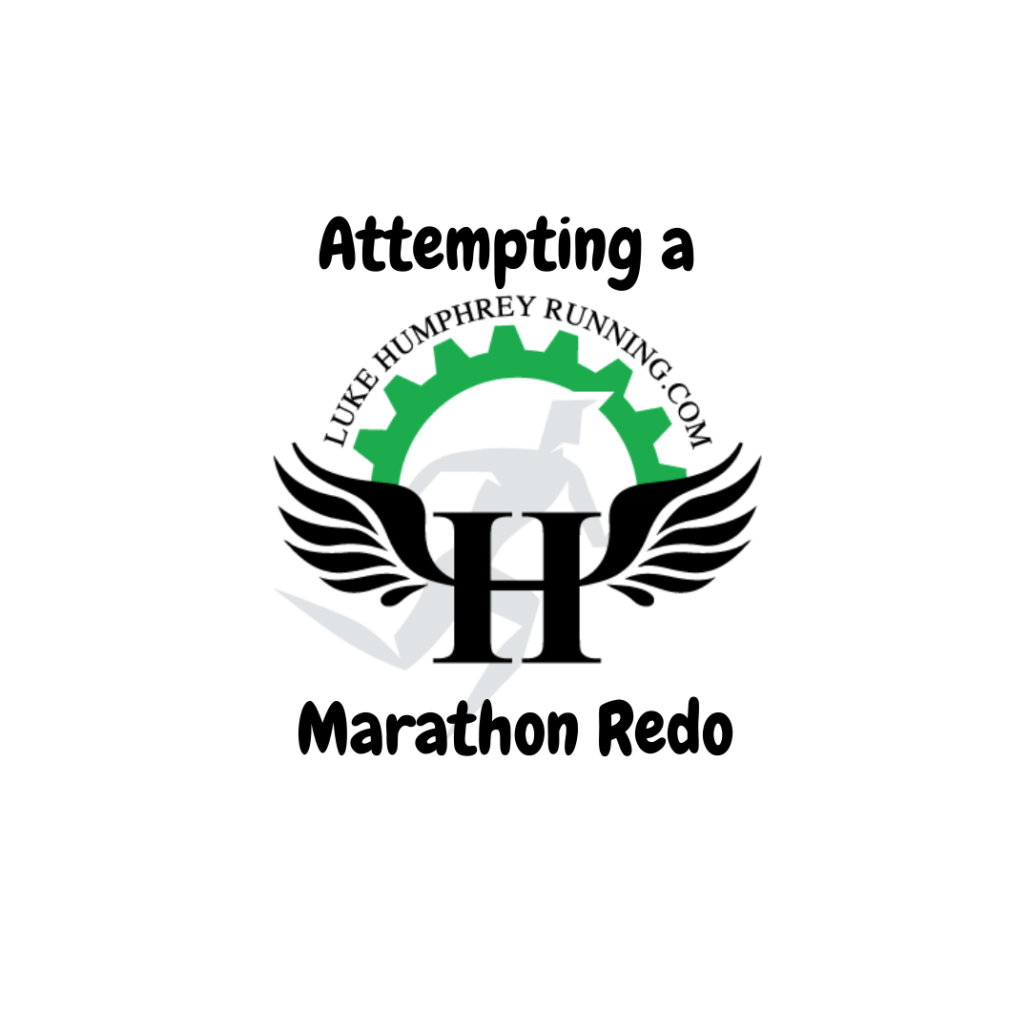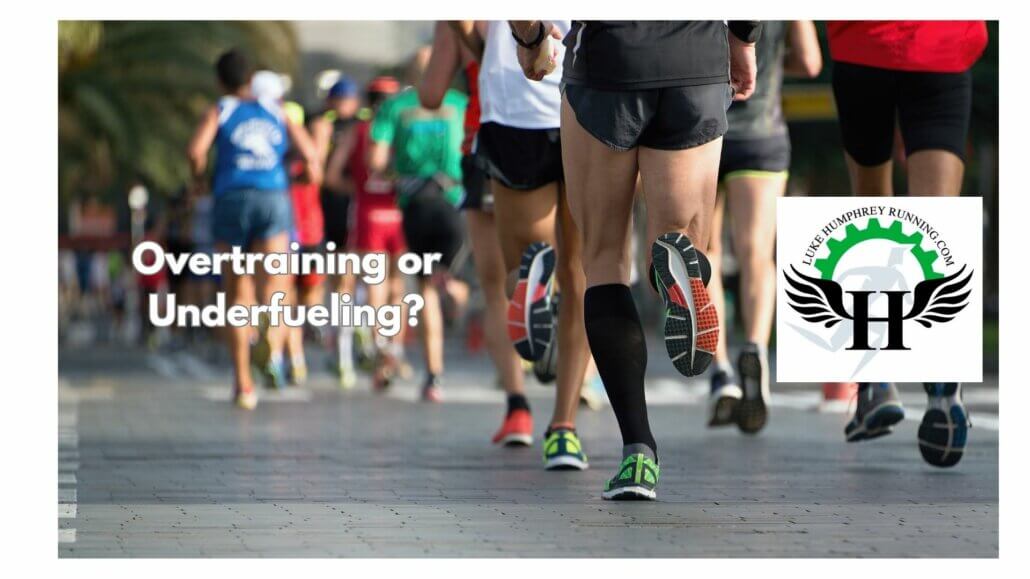Multiple Marathons: My thoughts on trying to give yourself a “redo” after your goal race.

It happens all the time, a runner has a disappointing race and is not willing to accept the results. So, they look at the calendar, and yep, there it is, a nice flat course that’s just screaming for redemption! Sure, it’s right there. It’s a nice little drive. A weekend getaway. It’d be perfect, but… should you do it? That’s the million dollar question. I want to explore some scenarios, get you thinking about what’s best for you, and provide some guidelines if it’s just gotta be done.
Questions that need to be answered:
Why are you doing this?
The biggest reason I see is for exactly what I described above. Redemption for a poor race. I get it, you put in a lot of work, you know you are more fit than what the results say. You don’t want that to be misrepresented. However, the risk to reward has to be evaluated and we will discuss this throughout the rest of the post. My advice, take a few days to make a decision. Avoid a knee jerk reaction.
The other big reason I am seeing this is due to deferments from the pandemic. This is a little different and I really get it. There was already a lot invested and then it was taken away. Financially, you may be tied into this too. This fall (2021) was a perfect example- you had London, Boston, Tokyo (before cancelled AGAIN) all going in the fall, when they are typically spring marathons. That meant all of the world majors were being put on in the same season. For some there was no other option than to buck up and get ‘em both in. My advice here is to pick which one you want to make your A race, which to me would be the first one, and then make the second one a destination reward tour for your hard work. We’ll discuss this more, too.
How many marathons have you done?
If you just completed your first marathon and want to make a quick turnaround, I would be very careful. My experience is that the first one is the toughest to recover from. If you are a veteran of multiple marathons, recovery can seem daunting the first few days, but many runners can bounce back quickly. That first one can be really tricky though. I have had runners, and myself, feel fine after a week, or two, only to have something flare up after they start running again. To me, in this situation it makes more sense to fully recover, go back to racing some other distances and then coming back to the marathon later on.
Was this your first time trying a new plan?
In particular, the Hansons Marathon Method. If it’s your first time using the plan, it can be a real eye opener to hard training. I have seen a lot of people blow past the idea of cumulative fatigue and straight into overtraining. If that’s the case with you, then just throwing another marathon in a few weeks might be possible, but chances are it won’t give you the result you are looking for. The short term attempt might not be worth it for the long term.
On the other hand, if you handled the training pretty well, you’ve had a couple rounds of the training, and other performances have been good (you just had a bad race), I will say this. You will be really fit and you’ll be really strong. If there is any plan out there that could facilitate a redo, I would say it would be HMM.
Did you bonk?
Did you stare down a brick wall and smash right into it? Or did you hold up pretty well? If you slowed down a few seconds per mile that’s one thing, but if you were giving back minutes per mile over the last few miles, that’s a bonk. It matters, because it means you really went to the well on this. You really depleted fuel sources and you probably did significant muscle fiber damage. If that’s the case, it takes time to recover from that. Muscle damage can still be present in runners 6-8 weeks after the race. If you you really had to have a come-to-Jesus talk with yourself to get across that line, then chances are you are in that boat. Jumping right into another race might not be the best short or long term situation. Even if you di finish, the chances of having a stellar performance is going to be low.
If you really just didn’t have a good day- maybe some stomach issues or a side stitch and you shut it down to preserve yourself, that’s another story. If you knew it wasn’t going to be your day and you dialed it back and just enjoyed the run, you still put your body through a lot- 26.2 miles is had, regardless of pace and effort. However, taking out the idea of running it as hard as you could will certainly lessen the blow. I don’t know if I’d turn around the next week and do another one, but in 2-4 weeks, yeah I could see that being possible.
The other factor you have to consider is weather. Maybe it was hot and humid, so you slowed it down. This still takes a big toll on you. You are much more likely to use up fuel sources, and become more dehydrated. I don’t think it has to be a deal breaker for trying again, but knowing your body is key here. If you don’t do well with heat and humidity, then you are probably going to have a tougher time recovering than someone who lives and trains in it regularly.
How I am looking at attempting a redo:
What I am assuming here is that you are, or had, made your initial race the end goal and now you are looking at getting a redo. However, what I am going to write below will work ok for those looking to make use of a deferment, a once in a lifetime opportunity, etc. Regardless, we are assuming that you were in peak fitness and made a serious attempt at a goal race. Given that, we know your fitness level is high. Running a marathon did not change that. Physiologically, you are at the highest levels you have been and as long as we can keep any serious detraining effects from developing, that part will be ok. However, physically, things like bone, muscle, and tendon literally took a beating and a fast ramp up really increases the chance at putting these over the edge, resulting in injury. You also have to think about your immune system. Putting in a monster effort like that will definitely suppress the immune system. The last thing we want is to put ourselves in a hole we can’t dig out of.
Given all that, I am looking at this in two phases if you are doing another marathon in 4 weeks and three phases if going in 6-8 weeks. The first phase would be the acute recovery phase where just getting everything back to some kind of homeostasis is our top priority. The second phase is to get our running legs back underneath us to stop potential detraining. The third phase would be to get back to some workouts in order to put a floor on any detraining that may have occurred. As you can tell, none of this is about adding to our fitness level, but rather, to make sure we don’t lose our high level of fitness and have a body capable of handling that marathon stress for a second time.
Phase 1 (one week)
Day 0: Race day. Regardless if you are even thinking about a redo, this should happen anyway.
- Start recovery process ASAP
- Fuel, especially carbs and protein. I know you probably won’t feel like it right away, but as soon as you can.
- Rehydrate. The better you did during race hydration and fueling will make this easier, but you are still severely depleted.
- Ice bath?
- Reduce inflammation- tart cherry juice, something to that effect. Personally, I’d stay away from things like NSAIDS.
- Off your feet for a bit. I know the temptation is to see the city if you travelled, but take at least a little downtime.
Day 1: No running. Continue your focus on replenishing and rehydrating. You may actually feel better today than you did after the race. Don’t let that fool you.
Day 2: Walk for 30 minutes. Today you may feel like your legs did a complete 180 from yesterday. To be expected. Continue focus on refueling, rehydration, and rest.
Day 3: Walk for 30 minutes. Consider a light massage or very light massage gun.
Day 4: Off. Maybe some very light static stretching.
Day 5: 45 minute walk.
Day 6: 30 minute walk. Possible second massage.
Day 7: 60 minute walk.
Key Points:
- Plenty of protein. 20-25 grams at every meal. I’d like to see this 4 times throughout the day. Three main meals and a nighttime snack.
- Replenish carbs. I know you just got done with carbo loading, but you burnt it all up! Have to give the body the fuel it needs.
- Nutrients to promote healing- like vitamin D, zinc, and vitamin C. Also boosts that immune system.
- Control the inflammation in a natural way- things like tart cherry juice and omega 3 fatty acid supplementation can’t really help.
- Sleep. High quality sleep. The temptation is to catch up from missed things during your original segment (or stay up too late watching MLB playoffs), but the body recovers best during times of rest. Don’t work against yourself.
Phase Two (two weeks)
Day 1: Off or light 20-30 minute walk.
Day 2: 30 minute jog. You are going to feel like you haven’t run in 5 years. This is fair warning.
Day 3: Off or 30 minute walk
Day 4: 45 minute run
Day 5: 30 minute run
Day 6: 60 minute run
Day 7: 30 minute run
Note: I think two weeks is cutting it close. I’d give yourself a third week, at least. This will give you one more week to feel “normal.” However, if it has to be two weeks, I still think getting the 60 minute run is, so I would remove day three and slide up day 4-7 up a day. Then Day 7 would be race day. Not ideal, but “what it is, boss.”
Day 8: 30 minute jog
Day 9: 45 minutes with 3×2 minute pickups at MP
Day 10: Off
Day 11: 45 minutes
Day 12: 30 minutes
Day 13 20 minutes (if racing) If not racing 40-45 minutes.
Day 14: RACE. If not racing: 90 minutes long (easy to long pace, depending on how you feel).
If you do race-TAKE TIME OFF. Full recovery per coach’s order. If going 4 weeks after the original race, see below.
Day 15: 45 minutes
Day 16: 3×1 mle @ MP or 6×800 @ MP. Repeat distance isn’t the concern, just getting legs back into the harder efforts.
Day 17: Off
Day 18: Easy 60 minutes
Day 19: Easy 30 minutes
Day 20: Easy 20 minutes
Day 21: RACE, immediately followed by mandatory rest.
Another massage and/or regular massage gun sessions can be maintained. Dynamic stretching/warmups should be reintroduced. Get those muscles working LIGHTLY through range of motion.
Phase Three: (weeks 5-8 post A race)
Here is where it gets too murky to provide specifics. I can offer general guidance here, but some of it is up to your personal preference. Include:
Easy days of 45-60 minutes. I like 60 minutes as an easy run stimulus.
Tuesday or Wednesday: SOS of either marathon pace or strength pace. I don’t think you have to do traditional marathon tempos. The traditional 6×1, 4×1.5, 3×2, 2×3 can work just fine at marathon pace and you can adjust the recovery as needed. Do a longer run on the weekends. Something in the 90-120 minute range. I’d also give yourself 2-3 days of easy running between each SOS/Long run. So, that can be Tues/Saturday combos or Wednesday/Sunday combos for most people. Race week would look like any of the race weeks I wrote out above.
In summary
Phase 1 and 2 are designed to “stop the bleeding.” If you tapered for two weeks then in theory, you have a couple more weeks of potential taper upswing before that deteriorates into detraining. Beyond that, it is a balancing act to make sure all structural components are on the mend. Luckily, from what we know about detraining, even a small stimulus will blunt the losses from getting too significant. So, recovery and maintenance are the goal outcomes of phase one.
In phase three, we do run the risk of losing enough of our hard earned adaptations that we do need to make sure we are providing enough stimulation to actually stop any significant losses. We will “reverse taper” by adding volume and intensity each week for a short amount of time. We won’t really re-taper because we are putting our fitness back on an ever so slight fitness upswing and we don’t want to mess with that. It will help carry us through the second race. Plus, when you look at it, you never get back to peak volume or intensity, so your body is really still continuing to heal and recover all the way through the second attempt.
The last thing I will say is that if the second race is beyond 8 weeks and creeping into the 10-12 week range, then I would encourage at least a week to 10 day recovery with just walking and recovery modes we discussed. Then start an abbreviated new segment. Your fitness will still be much higher than when you started the segment for the original A race segment, but it would probably require much more individual attention. At that point, I’d really recommend a consultation, custom schedule, or short term coaching stint.
If you try this, let us know how it goes. We’d like to hear the athletes’ experiences on this.
If you’d like this in training plan form, click the appropriate link for you above. this will take you to the Final Surge version of these plans.




